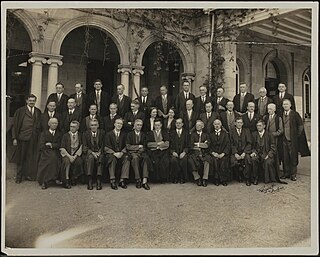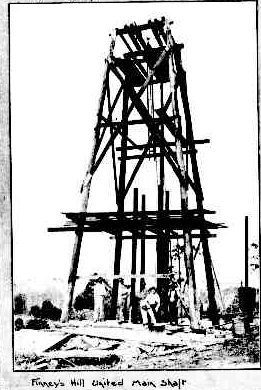
The University of Queensland is a public research university located primarily in Brisbane, the capital city of the Australian state of Queensland. Founded in 1909 by the Queensland parliament, UQ is one of the six sandstone universities, an informal designation of the oldest university in each state. UQ is also a founding member of edX, Australia's leading Group of Eight and the international research-intensive Association of Pacific Rim Universities.

Social impact assessment (SIA) is a methodology to review the social effects of infrastructure projects and other development interventions. Although SIA is usually applied to planned interventions, the same techniques can be used to evaluate the social impact of unplanned events, for example, disasters, demographic change, and epidemics. SIA is important in applied anthropology, as its main goal is to deliver positive social outcomes and eliminate any possible negative or long term effects.

John Quiggin is an Australian economist, a professor at the University of Queensland. He was formerly an Australian Research Council Laureate Fellow and Federation Fellow and a member of the board of the Climate Change Authority of the Australian Government.

Saleem H. Ali is a Pakistani American Australian academic who is the Blue and Gold Distinguished Professor of Energy and the Environment at the University of Delaware and also directs the university's Minerals, Materials and Society program. He has also held the chair in Sustainable Resources Development at the University of Queensland in Brisbane Australia where he retains affiliation as an Honorary Professor. He is also a senior fellow at Columbia University's Center on Sustainable Investment. Previously he was Professor of Environmental Studies at the University of Vermont's Rubenstein School of Natural Resources, and the founding director of the Institute for Environmental Diplomacy and Security as well as a Fellow at the Gund Institute. He has collaborated on environmental and social impact assessment research on deep sea mining using Life Cycle Analysis techniques to assist policy-makers in small-island developing states, Nauru, Cook Islands, Kiribati and Tonga, who are considering such investments under the auspices of the International Seabed Authority
Mount Isa Mines Limited ("MIM") operates the Mount Isa copper, lead, zinc and silver mines near Mount Isa, Queensland, Australia as part of the Glencore group of companies. For a brief period in 1980, MIM was Australia's largest company. It has pioneered several significant mining industry innovations, including the Isa Process copper refining technology, the Isasmelt smelting technology, and the IsaMill fine grinding technology, and it also commercialized the Jameson Cell column flotation technology.
Peak minerals marks the point in time when the largest production of a mineral will occur in an area, with production declining in subsequent years. While most mineral resources will not be exhausted in the near future, global extraction and production has become more challenging. Miners have found ways over time to extract deeper and lower grade ores with lower production costs. More than anything else, declining average ore grades are indicative of ongoing technological shifts that have enabled inclusion of more 'complex' processing – in social and environmental terms as well as economic – and structural changes in the minerals exploration industry and these have been accompanied by significant increases in identified Mineral Reserves.
The Australasian Institute of Mining and Metallurgy (AusIMM) provides services to professionals engaged in all facets of the global minerals sector and is based in Carlton, Victoria, Australia.

Walter Heywood (W.H.) Bryan (1891–1966) was an Australian geologist, educator and decorated military veteran. He founded the University of Queensland Seismology Station, and was the first student at the University of Queensland to receive a Doctor of Science (D.Sc.) degree. He served with distinction during World War I.

Julius Kruttschnitt IIMAusIMM was an American-born Australian mining manager, who helped to establish the mining industry in Queensland, Australia.

Casa Grande is a heritage-listed villa at Nettle Street, Mount Isa, City of Mount Isa, Queensland, Australia. It was designed by Donoghue, Cusick & Edwards and built in 1949. It was added to the Queensland Heritage Register on 28 May 1999.
Robert (Bob) Bryan, AM, is an Australian geologist who worked extensively in outback Queensland and Western Australia early in his career and has had a long term involvement in the property and mining industries in Australia and South East Asia. His lifelong achievements in mining in Australia were recognised when he was inducted into the Queensland Business Leaders Hall of Fame in 2009 and the award of an honorary doctorate from the University of Queensland in 2010.
Frank Thomas Matthews White (1909–1971) was an Australian mining and metallurgical engineer and mineral science educator. His career included appointments in Australia, Fiji, Malaya, and Canada.
Sir James William Foots was an Australian mining engineer and Chairman of Mount Isa Mines and Chancellor of the University of Queensland.
Ray Whitmore (1920–2008) was a British mining and metallurgical engineer and academic, who specialised in research into radar, mining and metallurgical engineering and mining heritage in England and Australia.

The Indooroopilly Silver Mine is a historic silver mine at Indooroopilly, Brisbane, Australia
Sir George Read Fisher was one of Australia's leading mining executives. In 2019, he was posthumously inducted into the Queensland Business Leaders Hall of Fame in recognition of his eminent business leadership, driving the long-term success of Mount Isa Mines and Mount Isa's growth and development as a city.
Alban Jude Lynch was a mining engineer and academic who helped develop the mineral processing teaching experience for mining students in Australia.
Paul Christopher Memmott is an Australian architect, anthropologist, academic and the Director of the Aboriginal Environments Research Centre at the University of Queensland. He is an expert on topics related to Indigenous architecture and vernacular architecture, housing, homelessness and overcrowding.
Ian MorleyISO (1904–1989) was an Australian mining engineer and administrator, who advocated for safe mining practices and reforms for the Australian mining industry.

James Richard May was an Australian chemical engineer and company director who was the Chief Executive Officer of the Australian Minerals Industry Research Association Limited (AMIRA) between 1968 and 1994. He was also a fellow of a number of chartered institutions and organisations and was on various committees and academic institutes.









